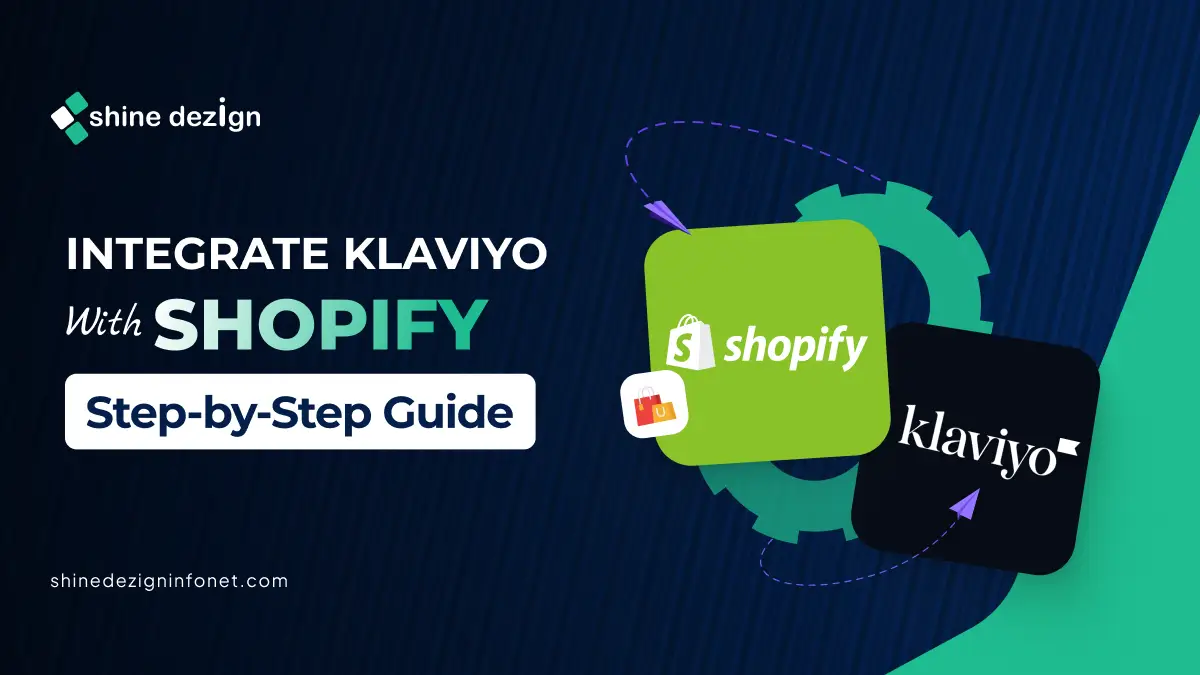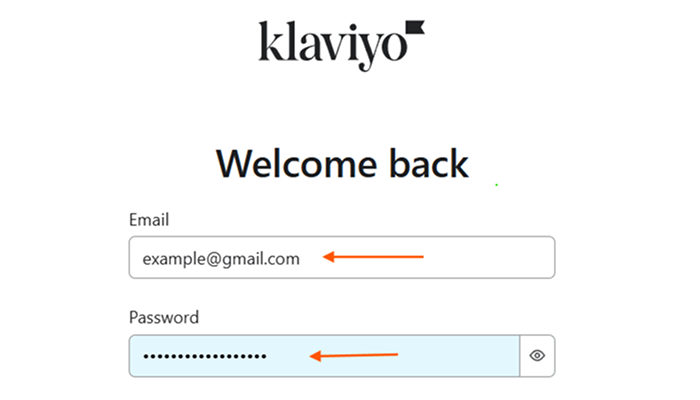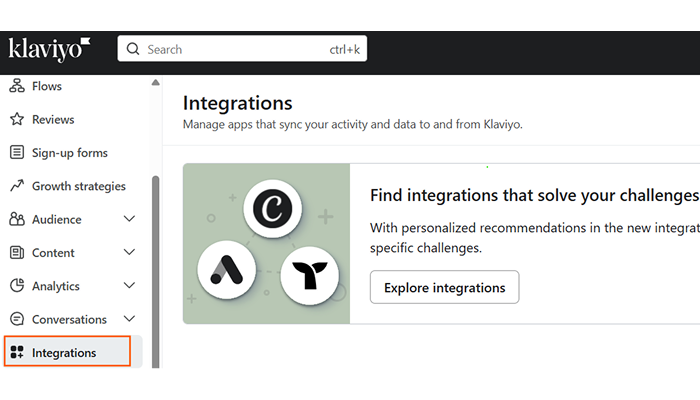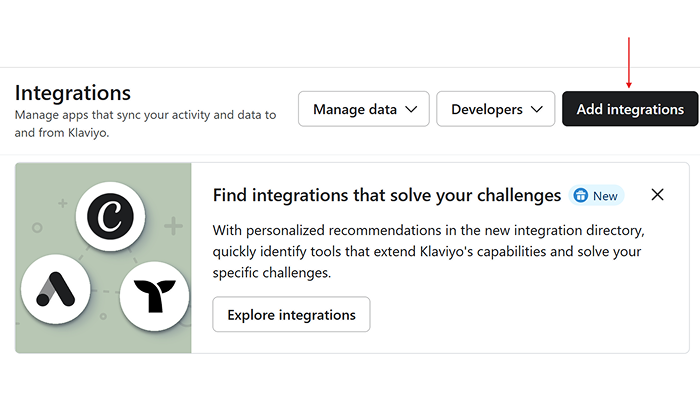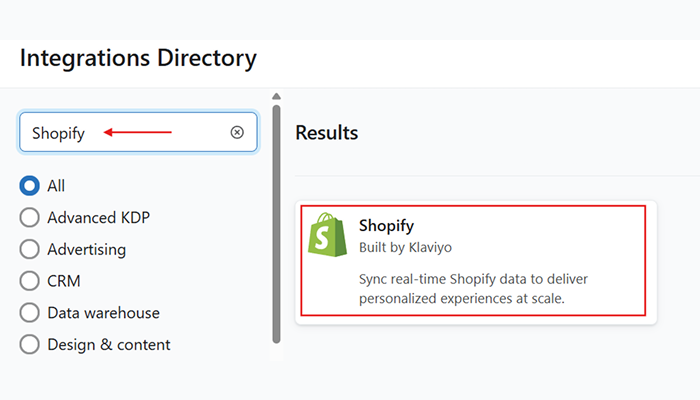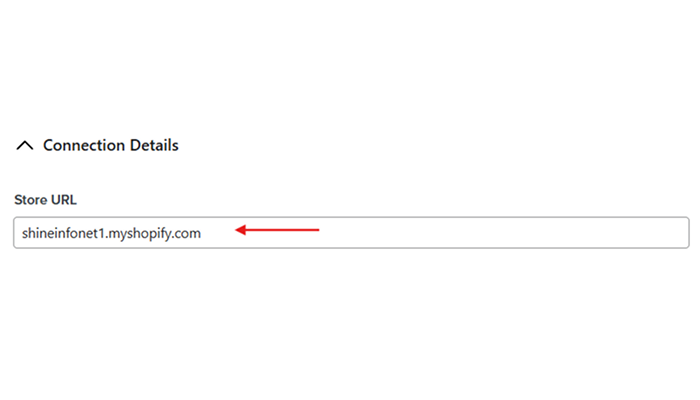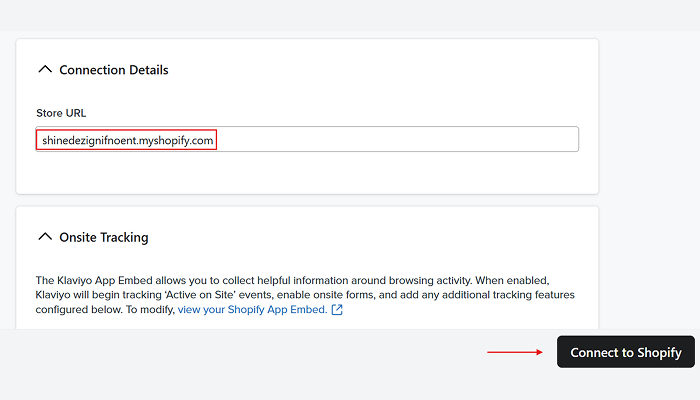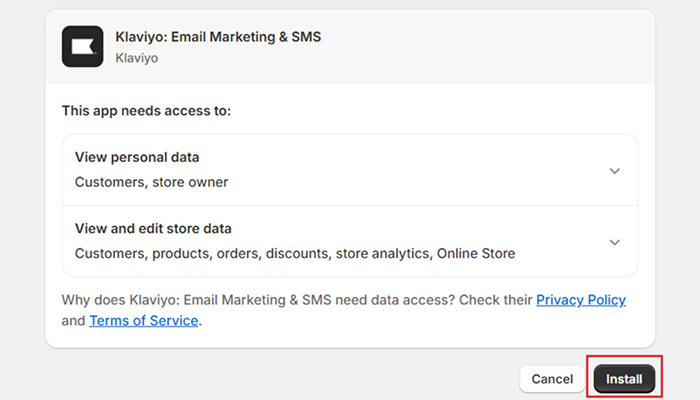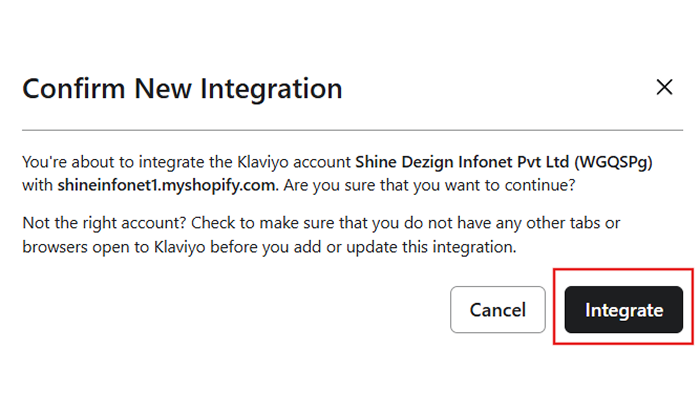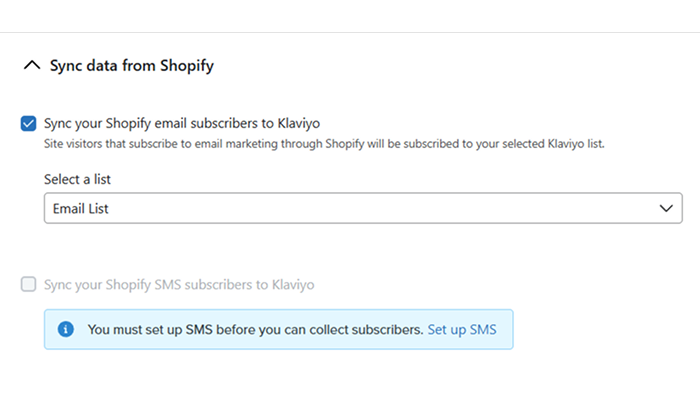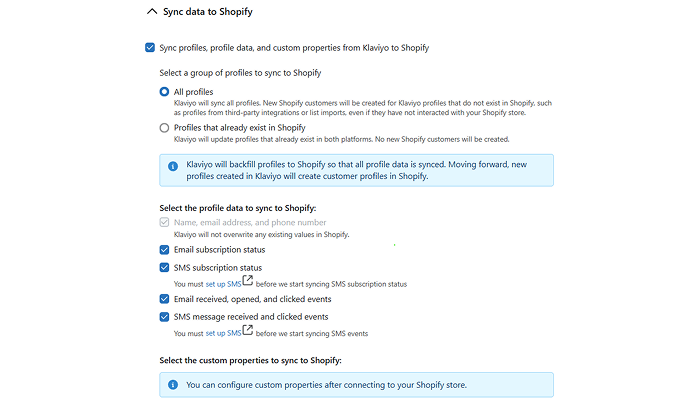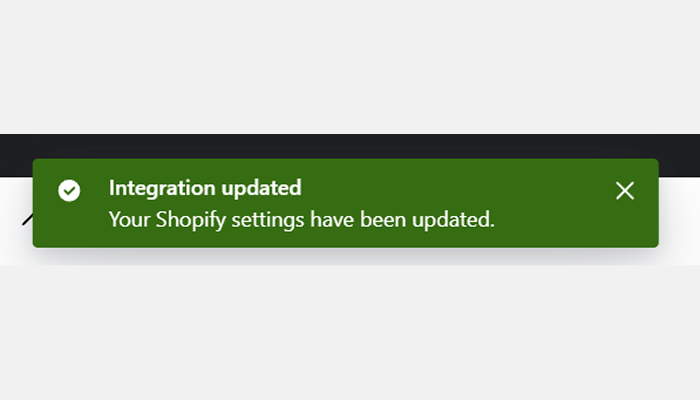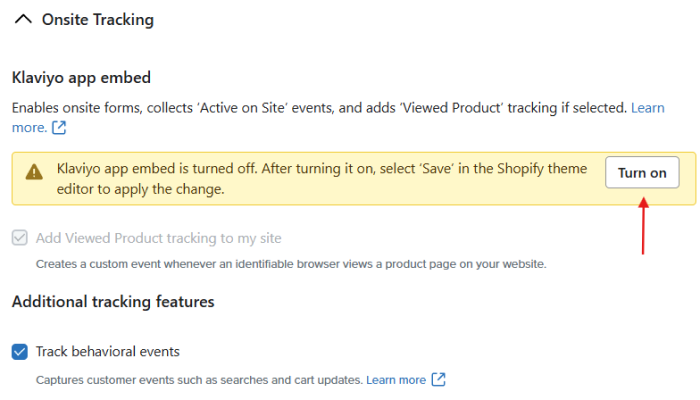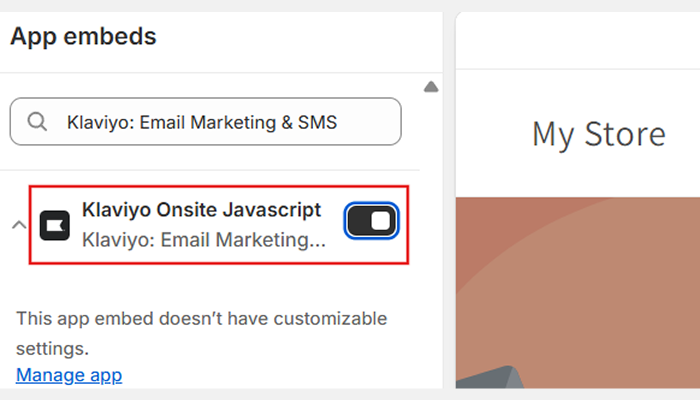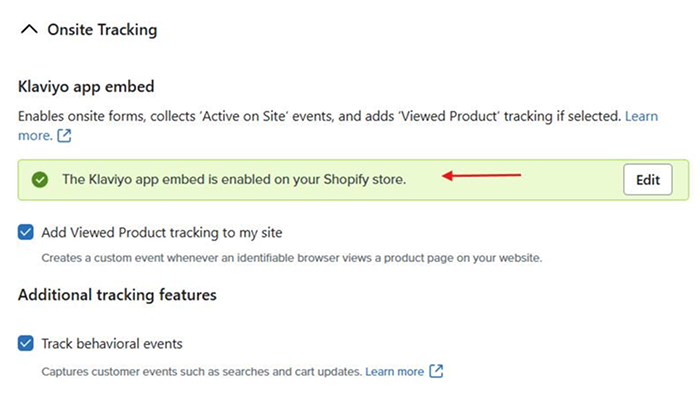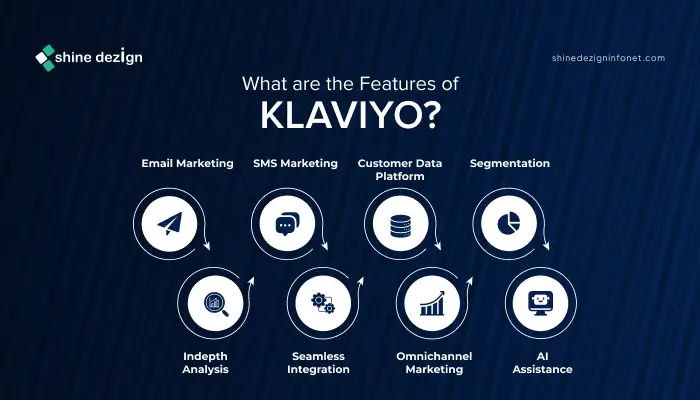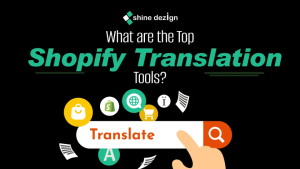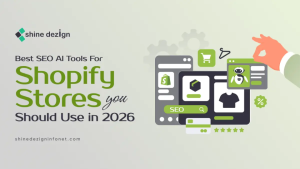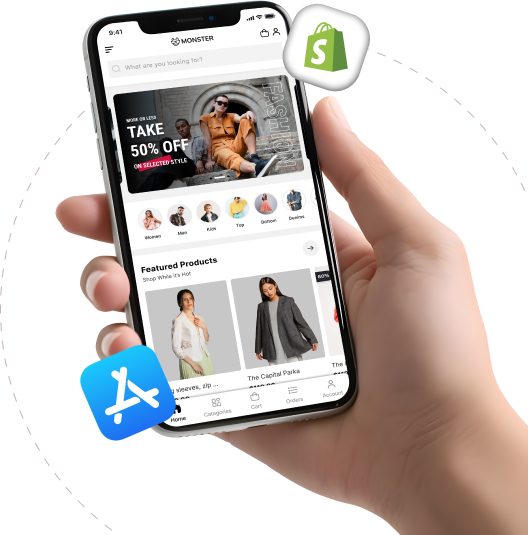Table of Contents
Successful customer communication is essential. Klaviyo is a marketing automation platform with robust capabilities for B2C companies, combining email and SMS marketing with CRM features. Using data-driven insights, Klaviyo enables brands to develop personalized marketing experiences that increase engagement and sales. This guide addresses Klaviyo’s capabilities, Klaviyo Shopify integration advantages, integration process, and troubleshooting.
What is Klaviyo?
Klaviyo is a top marketing automation platform specifically designed for eCommerce companies and other B2C firms. It enables brands to develop customized marketing experiences through customer behavior and data. By combining email marketing, SMS marketing, and customer relationship management (CRM) in one integrated platform, Klaviyo helps companies interact with their customers efficiently, boost sales, and build long-term loyalty.
The main intention of Klaviyo is to empower companies to know their customers better and speak to them in a language that strikes a chord. This is done with the help of sophisticated segmentation, automation, and analysis so that the brands can send the correct message at the correct moment.
Why Integrate Klaviyo with Shopify?
Klaviyo Shopify setup helps businesses advance their marketing by leveraging customer profiles and order data. It enables targeted messaging, personalized marketing campaigns, and powerful customer engagement. The following are some of the major advantages of integrating Klaviyo with Shopify:
Centralized Customer Data
Synchronize customer profiles and order information between Klaviyo and Shopify to get a complete view of customer activities.
Targeted Messaging
Use customer information to build one-to-one email and SMS campaigns that speak directly to particular groups of your audience.
Onsite Tracking
Track customer activity on your Shopify site, enabling you to understand how customers engage with your products.
Automated Subscriber Sync
Automatically add customers who opt in for email or SMS marketing to your Klaviyo lists, streamlining your marketing efforts.
How to Integrate Klaviyo with Shopify?
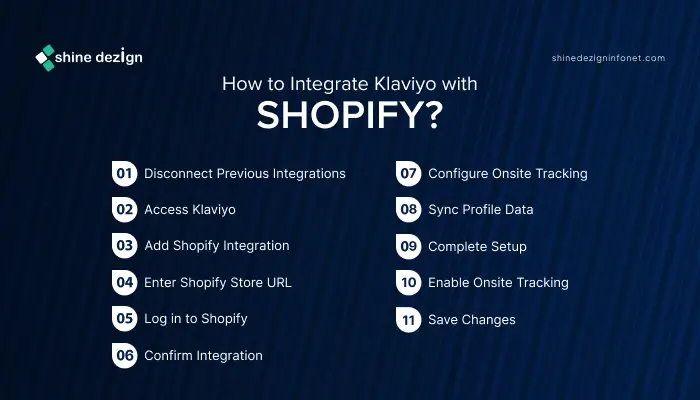
Steps to connect Klaviyo to Shopify:
Step 1: Disconnect Previous Integrations:
To avoid sending double opt-in mailings to your current subscribers, disconnect any existing email service provider (ESP) connected to your Shopify store.
- Log in to your Shopify admin panel.
- Locate the integrations section and disconnect the old ESP.
Step 2: Access Klaviyo
You have to log in to your Klaviyo account to initiate the integration process.
- Access the Klaviyo site on your browser.
- Log in using your credentials.
 Step 3: Add Shopify Integration
Step 3: Add Shopify Integration
This is the step where you can initiate the Klaviyo and Shopify connection.
- In Klaviyo, go to the Integrations tab on the left sidebar.

- Click on Add Integrations and find a list of integrations that can be added.
 Step 4: Enter Shopify Store URL
Step 4: Enter Shopify Store URL
Klaviyo must know which Shopify store to integrate with.
- Find Shopify in the integrations list and click on the card.

- Click Install. You will be asked to enter your Shopify store URL as mystore.myshopify.com.

- Enter the Store URL and click Connect to Shopify.
 Step 5: Log in to Shopify
Step 5: Log in to Shopify
You are required to authenticate the connection by logging into your Shopify account.
- If asked, provide your Shopify login credentials.
- This is just to make sure Klaviyo is authorized to access your Shopify store.
Step 6: Confirm Integration
Once you have logged in, you must confirm the integration to complete the process.
- Read through the permissions Klaviyo is asking for and click Install app.

- Once brought back to Klaviyo, click Integrate to confirm the integration.
 Step 7: Configure Onsite Tracking
Step 7: Configure Onsite Tracking
This process enables you to monitor customer activity on your Shopify store, which is fundamental for successful marketing.
- In the integration configuration, mark the checkbox to synchronize Shopify email subscribers to Klaviyo.

- You can also personalize the marketing consent checkbox label on Shopify to ensure enhanced compliance.
- Choose the respective lists for email and SMS subscribers from the dropdown menus.
Step 8: Sync Profile Data
Synchronizing profile data makes customer information match between Klaviyo and Shopify.
- Select to sync all profiles or existing ones.
- Select the profiles of information you would like to sync, like name, email address, and subscription status.

Step 9: Complete Setup
Completing the setup ensures that the integration is enabled, and the syncing of data starts.
- Click Complete setup.
- You will see a green success message that lets you know your data is syncing with Klaviyo.
 Step 10: Enable Onsite Tracking
Step 10: Enable Onsite Tracking
Allowing onsite tracking enables you to track customer interactions on your store and use this information to optimize your marketing efforts.
- In the Onsite tracking field, select the box to track events such as Viewed Collection and Added to Cart.
- You might notice a message stating that the Klaviyo app embed is disabled; click Turn on to activate it.
 Step 11: Save Changes
Step 11: Save Changes
Saving changes allows all your settings to be implemented properly.
- You will be directed to your Shopify theme settings.
- Ensure the Klaviyo app embed is turned on, then save from the theme editor.

- Go back to Klaviyo and refresh the integration settings page to ensure that the app embed is on.
 How to Handle Troubleshooting?
How to Handle Troubleshooting?
If you believe that your Shopify integration is not syncing data properly, you can reset the sync by following these steps:
- In Klaviyo, go to the Integrations tab.
- Choose Shopify from the list.
- Click Update Settings. If you are not already signed in to your Shopify store, you will be asked to log in to Shopify.
- Once logged in, go to Update Your Integration Settings. This will re-authenticate the integration with Shopify, and you will be brought back to Klaviyo. Be aware: If you click to update and then leave the page or hit the back button before the authentication is finished, it will deactivate your integration.
- A “Settings Updated” notification will appear at the top of the page, confirming that your integration has been updated and is in the process of resyncing. It may take a moment for this notification to show up.
What are the Features of Klaviyo?
 Email Marketing:
Email Marketing:
- Campaign Creation: Klaviyo has a drag-and-drop email builder where users can create attractive emails without writing code. Users have access to a wide variety of templates or can build their own designs.
- Personalization: Klaviyo allows personalization of emails based on customer data, which helps maximize engagement rates.
- A/B Testing: Users can test subject lines, content, and send times to optimize email performance.
SMS Marketing:
- Text Campaigns: Klaviyo enables businesses to send promotional messages, updates, and reminders via SMS, reaching customers directly on their mobile phones.
- Automation: Just like with email, SMS messages can be automated based on customer behavior, such as cart abandonment or post-purchase follow-ups.
Customer Data Platform (CDP):
- Unified Customer Profiles: Klaviyo consolidates data from multiple sources to create detailed customer profiles, helping businesses understand their audience better.
- Behaviour Tracking: The platform tracks customer activity across various channels, providing valuable insights into behavior and preferences.
Segmentation:
- Dynamic Segments: Business users can create segments using real-time data such as recent purchases, engagement levels, and demographic attributes.
- Targeted Campaigns: This segmentation allows businesses to align marketing efforts with specific customer groups, making campaigns more relevant and effective.
Segmentation:
- Dynamic Segments: Business users can create segments using real-time data such as recent purchases, engagement levels, and demographic attributes.
- Targeted Campaigns: This segmentation allows businesses to align marketing efforts with specific customer groups, making campaigns more relevant and effective.
Analytics
- Performance Metrics: Klaviyo provides in-depth analysis of campaign performance, including open rates, click-through rates, and conversion rates.
- Customer Insights: Customer behavior can be analyzed to uncover trends, preferences, and areas for improvement.
Integrations:
- E-commerce Platforms: Klaviyo supports seamless integration with top eCommerce platforms such as Shopify, WooCommerce, and Magento, allowing for easy data synchronization.
- Third-Party Integrations: The platform offers over 350 integrations with social media, advertising, and analytics tools.
Klaviyo AI:
- Content Creation: Klaviyo uses AI to help users generate email content and subject lines, making it easier to create compelling campaigns.
- Predictive Analysis: The platform predicts customer behavior, such as likelihood to purchase, allowing businesses to target marketing efforts more effectively.
Omnichannel Marketing:
- Cohesive Experience: Klaviyo enables businesses to coordinate marketing efforts across multiple channels, providing a unified and seamless customer experience.
- Cross-Channel Campaigns: Users can create campaigns that engage customers through email, SMS, and social media, maximizing reach and engagement.
What are the Pros of Klaviyo?
User-Friendly Interface
Klaviyo’s clean and simple design ensures that users of all proficiency levels are able to work with the platform and build campaigns without extensive training.
Powerful Automation
The platform’s automation feature enables companies to create workflows that are triggered by customer activity, saving time and facilitating prompt communication.
Robust Analytics
Klaviyo offers detailed reporting and analytics, making it possible for businesses to gauge the performance of their campaigns and make informed decisions based on facts.
Highly Customizable
Customers can personalize emails, SMS, and customer segments extensively, making it possible to have a custom marketing approach that engages individual audiences.
Strong Customer Support
Klaviyo has a treasure trove of resources, such as documentation, webinars, and a community forum, along with exclusive customer support for helping users with any queries.
What are the Cons of Klaviyo?
Cost
Klaviyo’s pricing can prove to be a hindrance for small-scale businesses, particularly as the number of subscribers increases. The pricing model is based on the number of contacts, which could escalate rapidly.
Learning Curve
Though the platform is intuitive, some of the more sophisticated features take time and effort to learn, especially for marketers who are new to marketing automation.
Limited Free Tier
There is a free option available from Klaviyo, but it comes with limitations that may not suit everyone, especially those with larger subscriber bases or complex marketing needs.
Dependence on Data
To fully leverage Klaviyo’s features, businesses must have substantial customer data. Those with limited data may find it challenging to benefit from the platform’s full potential.
Summing Up
Integrating Klaviyo with Shopify is a smart approach to boosting marketing initiatives via data-driven insights and personalized messaging. Through this combination, companies can synchronize customer information, and targeted messaging and onsite activity can be tracked to better know their customers. Though issues can be present, awareness of common issues through troubleshooting can guarantee a seamless integration process. Through Klaviyo, companies can build genuine connections with their customers and accelerate growth.


